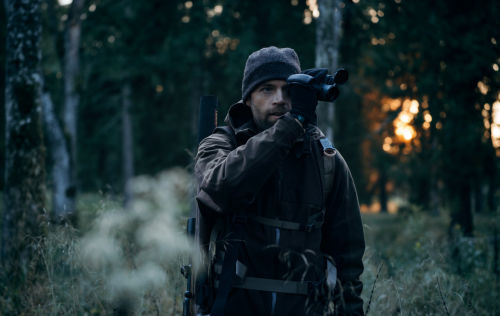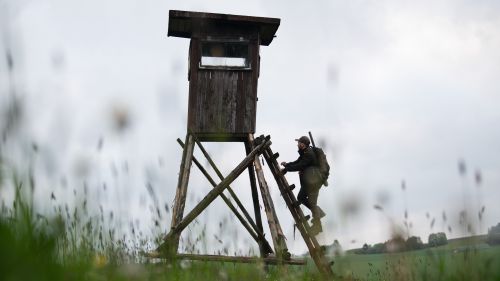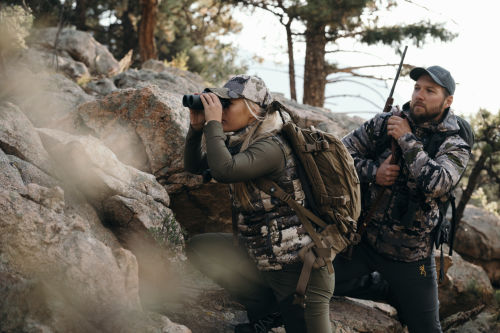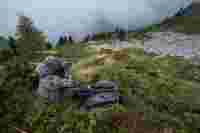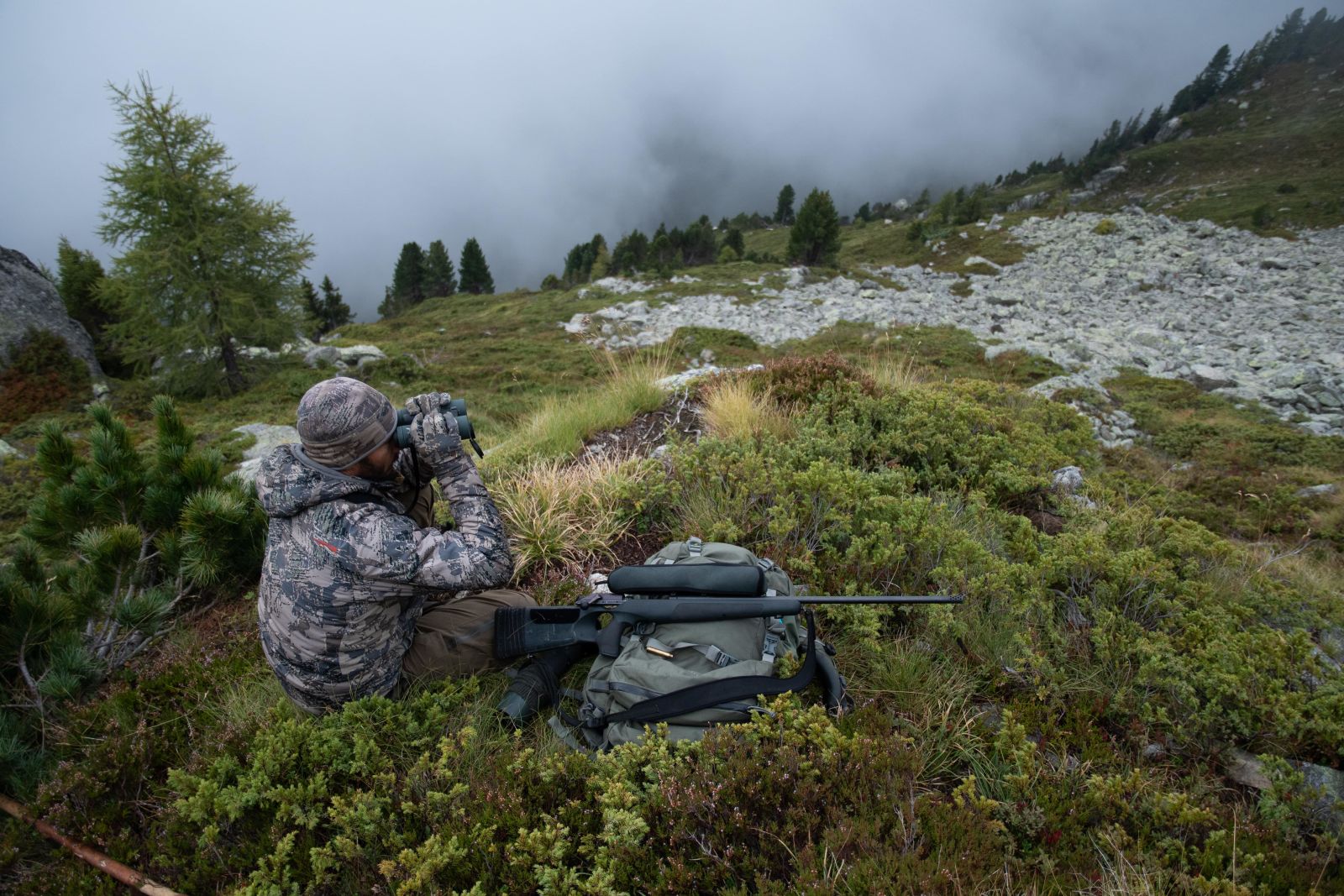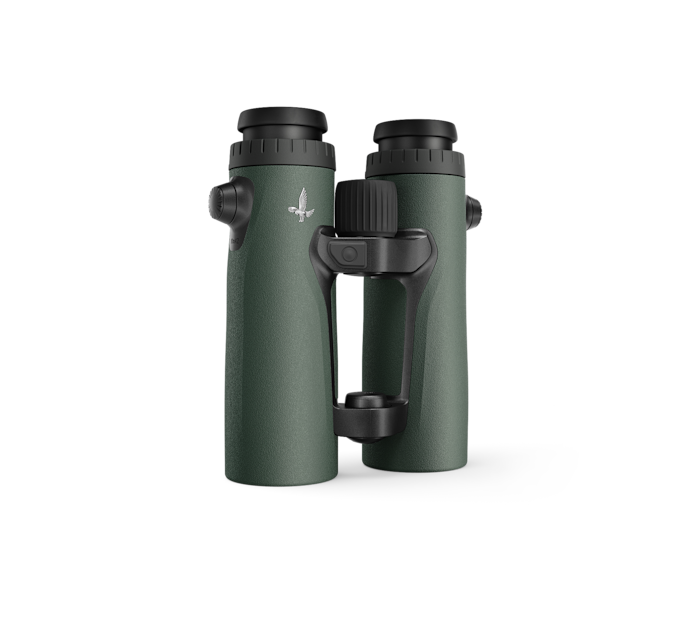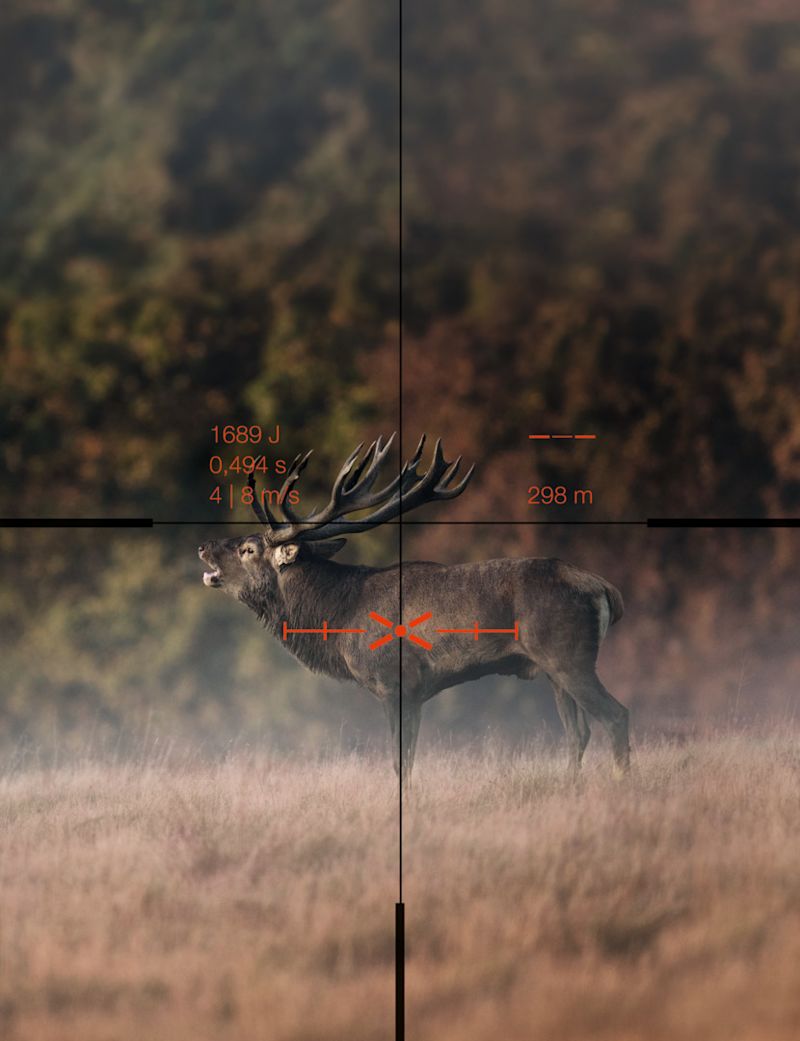For more than 10 years, Fabien Prétôt has never missed the opening day of the chamois season. So he headed out into the Swiss Alps of the canton of Valais in September 2020 to stay true to this tradition. However, this time he was not only accompanied by me, his brother Vincent, but also by the new EL Range TA.
Each year, it is the same ritual: Fabien heads out into the wilderness without his rifle a few days before the season starts to prepare for the hunt. He sets up and tidies his base camp at 2,000 m and plans the next days of scouting. When we go looking for them, the chamois are already there, and in numbers. What a great sign which lets our hearts rejoice.

We quickly see big groups of females with kids and one-and-a-half-year individuals, certainly their offspring from the previous year still hanging around with them. These groups live on the same level or higher than the base camp. The yellow and green fields are crisscrossed by granitic rocks, boulders, and screes. The chamois are grazing high above the tree line, where the larches’ needles are already turning yellow, one after the other. The wild seems to enjoy the last days of sun and heat as much as we do. Nature was generously providing us with lots of food all around: from sweet blueberries over mountain-ash red fruits and mushrooms to juniper berries – all ready to be harvested. It was about time that everyone, us included, gathered and prepared for the upcoming winter.
Equipped with the new EL Range TA, Fabien is able to explore the slopes and rocks one after the other, from the early morning to late evening. Thanks to his many years of experience, he knows several ideal glassing spots in the area.

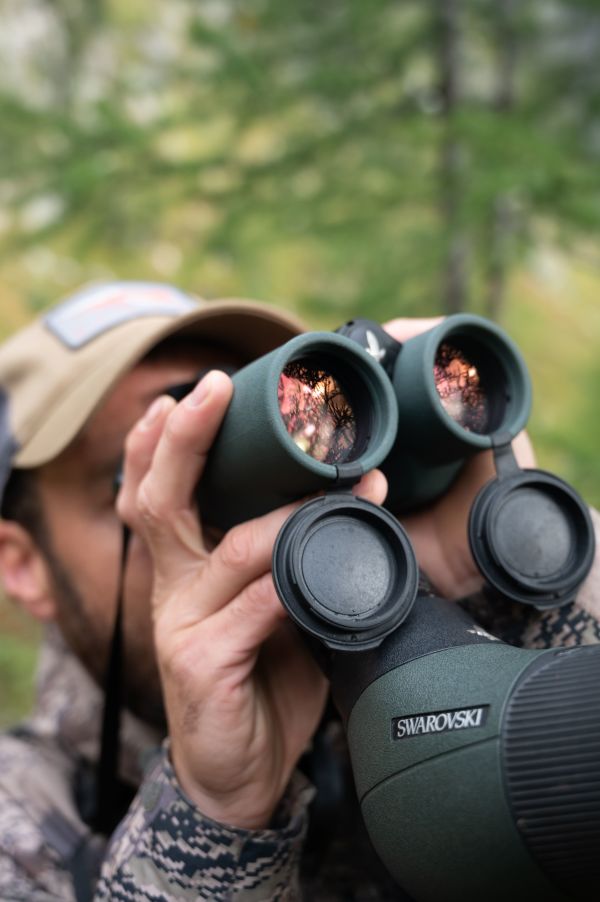
of the binoculars gives him the opportunity to identify animals with precision, which means that he correctly defines their age, sex, trophy size, health state, habits, attitude and many other criteria.
Sunday evening, after a round trip to get his rifle to the base camp, the plan was made for the next morning. Fabien had chosen the chamois to pursue for the first day of the season, located more than one kilometer away from us as the crow flies. Due to the shape of the land and the denivelation, we expected to need almost two hours to get to the group, close to a massive scree of green boulders about the mountain ridges.
“The EL Range TA will not only help me to see more wildlife and have a better viewing experience, but also to share it with others. Now I can show them just what it is that makes me go into the woods so often.”
Vincent PrétôtThe great female he saw was always on the side of the group, constantly at least fifty meters from the others. Some rare kids tried to approach her, but she tried to scare them away with vigorous horn threats and body pushes. However, this just seemed to amuse the kids and they came back to tease her.
The neck of the female was weaker, thinner and longer than the one from the other nannies around her, but her horns were much bigger, tight together and forming an elegant curve all along the way, finishing with a thin, sharp hook. Her fur seemed ruffled and colorless, washed out, faded. Her facial mask, the two with stripes on her face, were soften and unsharp. All these observations helped Fabien to know more about the female and to judge her. She was certainly an old female, with no kids, and essential point as the state of Wallis do not allow hunters to harvest milking nannies.
Before the first light, we were set and waiting for the day to chase the dark. Two hundred meter in front of us was the scree where the chamois were the last evening. As we could finally distinguish the rocks from the grass, when the pines stood out against the sky, Fabien saw with his binoculars several chamois coming to the feeding place. Every passing minute allowed us to see the scene taking place before our eyes better.
A group of seven chamois scattered the steep slope in front of us, four females and three kids. We took the time to observe the group one more time, trying to pair the kids with the moms. The young one with tight horns with this kid, the darker kid with this mom. And on the side, as usual, the older female, the greatest of the group, seemed again alone.
“Hunting in mountains and being outside for several days in a row means that you encounter all kinds of weather and you have to deal with. But isn’t that part of the fun though?”
Vincent Prétôt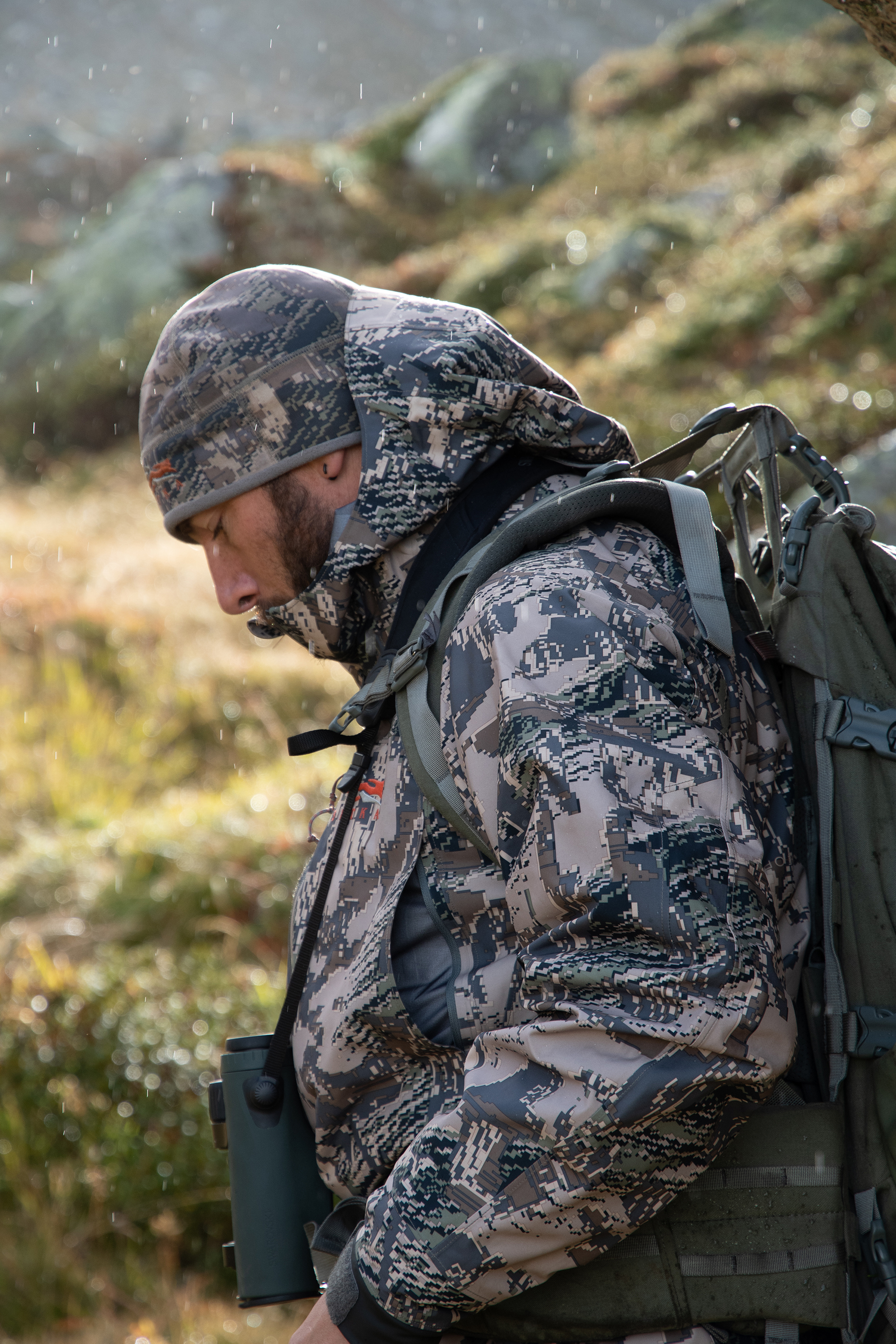

The time passed by a bit, no other chamois joined the group, which took away Fabien last doubts. He looked at me and with a head sign he made it clear that he was going to take the shot, confident. A last check with the range finder confirmed the distance, two hundred and eight meters, and few clicks on the ballistic turret corrected the drop of the heavy bullet.
The shot fired, roared and echoed many times in the still sleeping valley, as six chamois were fleeing to the peaks, now well aware that the hunting season was here.
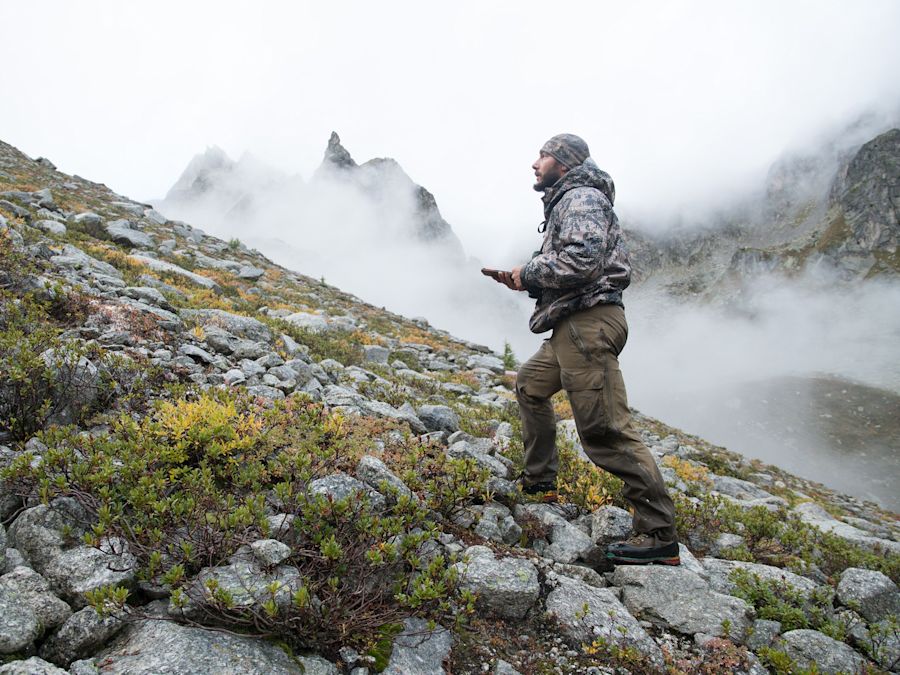
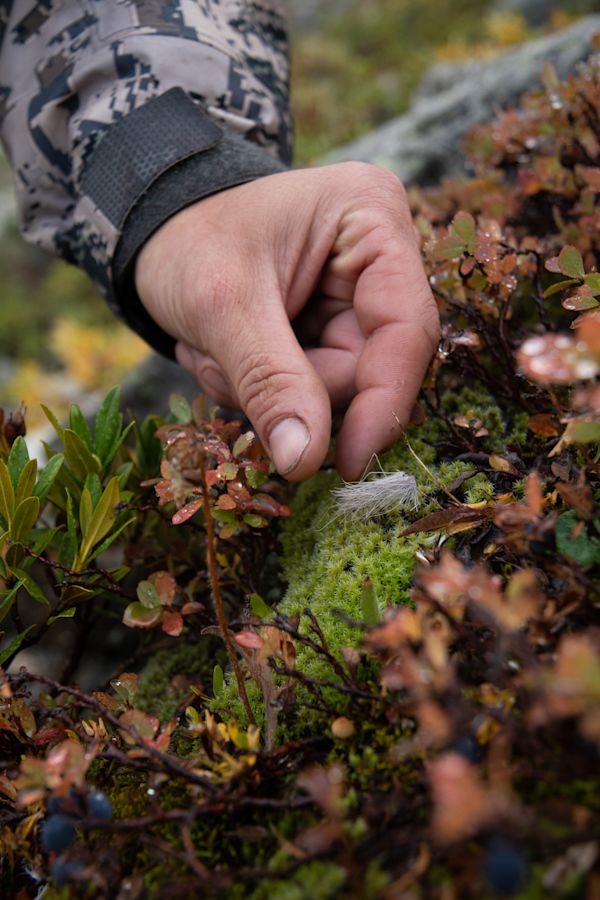
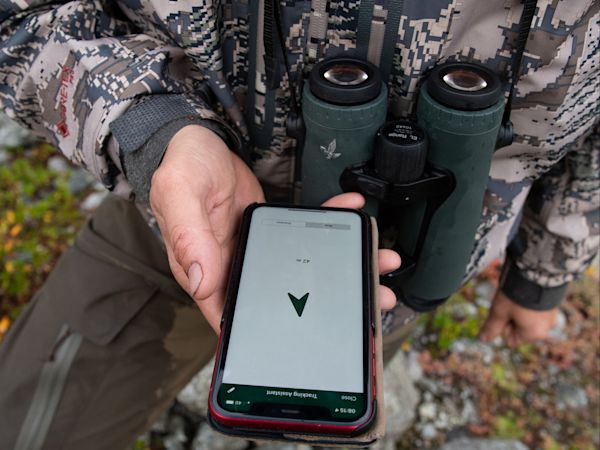
“I am using the EL Range TA at all time for hunting but also for any other outdoor activity. Going out to see migrating ducks in spring, preparing the hunting season in summer, or simply while hiking in the mountains for fun on holidays. These binoculars are my everyday companion.”
Vincent Prétôt
This experience proves once again that the quality of the material is important and that you need good optics to hunt with ethics and respect for the animals, the laws of nature and the laws of men. But it also demonstrates that material is not everything. Experience, preparation, knowledge about the animal, the landscape and the terrain play a major role, if not greater.
Put together, these elements allow the sportsmen to choose and kill fast and ethically, with profound respect to the animal and a deep appreciation of nature that welcomes us, each year, for another hunting season.
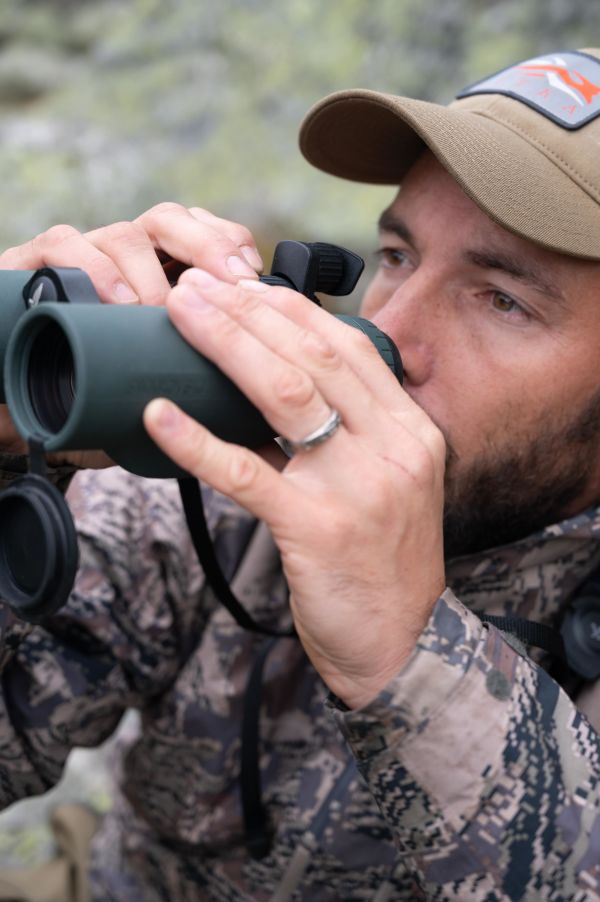
About the hunter:
Fabien Prétôt (the elder brother)
Fabien Prétôt loves hunting and mountaineering. He was born in 1985 and has taken over the family’s roof making company in the third generation. Nature and everything that gravitates around it fascinates him. On his hunts, he is accompanied by different SWAROVSKI OPTIK products. They help him take the right decision when choosing an animal to harvest. Thanks to high-quality optics, he can precisely hit the target and quickly harvest the animal while limiting suffering to a minimum.

About the author:
Vincent Prétôt (the younger brother)
Vincent Prétôt (born in 1992) is a young passionate hunter and photographer from Switzerland. His SWAROVSKI OPTIK products (EL Range TA 10x42 and Z8i 2-16x50 P) help him to hunt responsibly by choosing the right animal and harvesting the chosen animal thanks to a precise shot. The trained microtechnical engineer loves to photograph the beauty of hunting and to share the stories that go with it.
